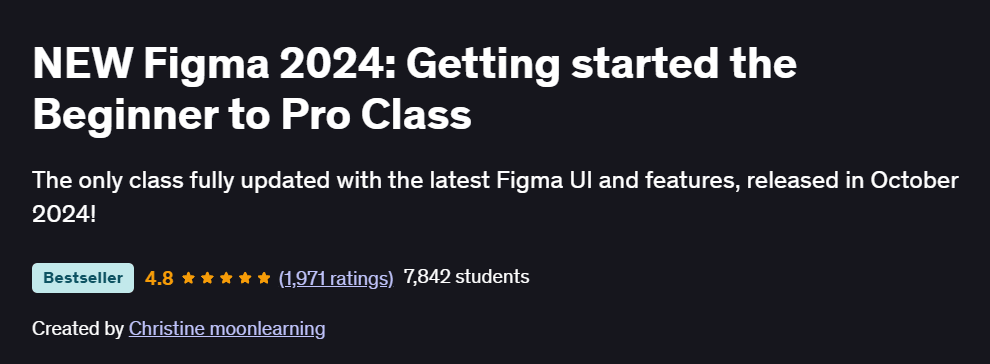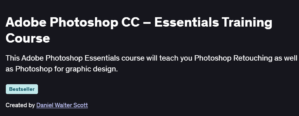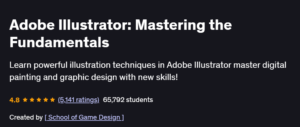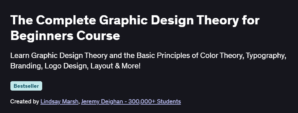What will you learn in NEW Figma 2024: Getting started the Beginner to Pro Class Course
Navigate Figma’s interface: frames, layers, components, and assets panel
Create and organize design systems with styles, components, and variants
Build responsive layouts using Auto Layout and constraints for web and mobile
Prototype interactive flows with triggers, overlays, and smart animate
Collaborate in real time: comments, version history, and handoff with inspect mode
Program Overview
Module 1: Figma Fundamentals & Interface
⏳ 45 minutes
Topics: Frames vs. groups, layers panel, properties inspector, community resources
Hands-on: Set up your first file, import assets, and organize pages
Module 2: Shapes, Text & Styles
⏳ 1 hour
Topics: Vector tools (pen, shape), text formatting, color & effect styles
Hands-on: Create a simple UI card with consistent typography and color styles
Module 3: Components & Variants
⏳ 1 hour
Topics: Creating components, toggles, buttons; managing variants for states
Hands-on: Build a button component with hover, pressed, and disabled variants
Module 4: Auto Layout & Responsive Design
⏳ 1.5 hours
Topics: Stacks, padding, alignment, constraints, resizing behaviors
Hands-on: Design a responsive navbar and card grid that adapt to different frame sizes
Module 5: Prototyping & Interactions
⏳ 1 hour
Topics: Prototype links, overlays, smart animate, device frames
Hands-on: Create a clickable flow between onboarding screens with animated transitions
Module 6: Collaboration & Handoff
⏳ 45 minutes
Topics: Comments, multiplayer editing, version history, Inspect panel for devs
Hands-on: Share a prototype link, leave comments, and export specs for a developer handoff
Module 7: Design System Essentials
⏳ 1 hour
Topics: Publishing libraries, global styles, documentation best practices
Hands-on: Publish your styles and components to a team library and update instances
Module 8: Final Project – Mini App UI
⏳ 2 hours
Topics: End-to-end UI design, component reuse, responsive prototype
Hands-on: Design and prototype a small “to-do” app with list views, detail screens, and interactive flows
Get certificate
Job Outlook
Figma proficiency is highly sought for roles like UI/UX Designer, Product Designer, and Visual Designer
In-demand across tech startups, agencies, and in-house product teams; strong freelance opportunities as well
Entry-level UI/UX designers earn $60,000–$80,000; experienced product designers command $90,000–$130,000+ annually
Mastery of Figma accelerates collaboration with developers and stakeholders, boosting project efficiency
Specification: NEW Figma 2024: Getting started the Beginner to Pro Class
|
FAQs
- No prior Figma experience is required; the course is beginner-friendly.
- Basic understanding of computers and web applications is sufficient.
- The course introduces Figma’s interface, tools, and workflows gradually.
- Step-by-step tutorials make learning accessible for new users.
- Students can start creating UI/UX designs confidently from scratch.
- Yes, the course covers both UI (user interface) and UX (user experience) fundamentals.
- Teaches layout, typography, color schemes, and interactive components.
- Includes practical exercises for designing prototypes and wireframes.
- Focuses on designing intuitive, user-friendly digital experiences.
- Skills gained are applicable for web, mobile, and app design projects.
- Yes, the course includes practical projects and design challenges.
- Students create complete UI/UX designs from concept to prototype.
- Encourages showcasing work in a portfolio to impress employers or clients.
- Teaches best practices for presenting designs effectively.
- Prepares learners for freelance, internship, or job opportunities.
- Yes, it helps learners adapt design workflows to Figma efficiently.
- Highlights similarities and differences between Figma and other tools.
- Covers collaborative features unique to Figma, such as real-time editing.
- Focuses on streamlining design processes for professional projects.
- Prepares learners for team-based design environments.
- The course is project-based with step-by-step design exercises.
- Students practice creating wireframes, prototypes, and interactive components.
- Hands-on exercises reinforce UI/UX principles and Figma tools.
- Encourages experimentation to develop personal design style.
- Additional practice outside the course is recommended to master advanced features.





